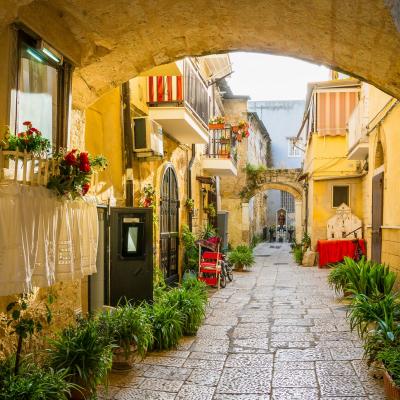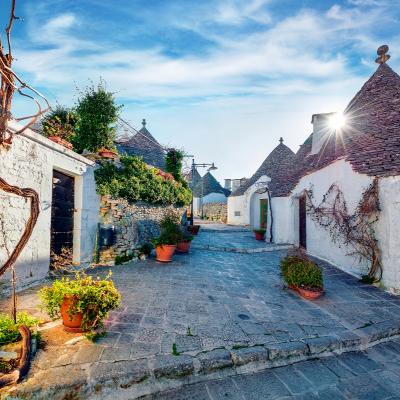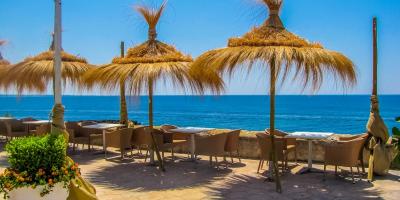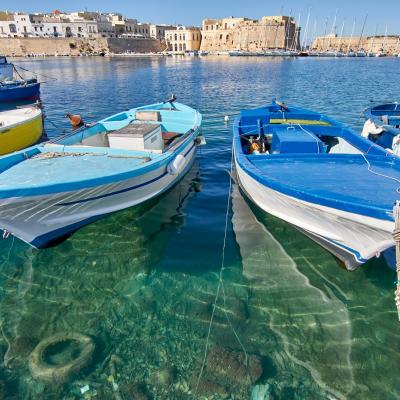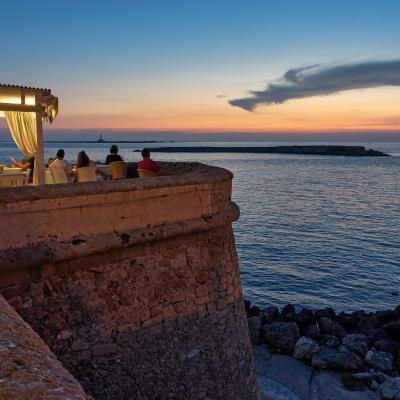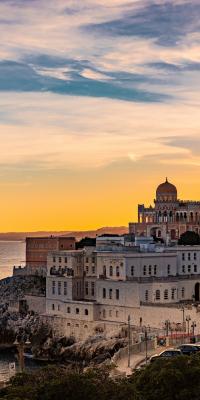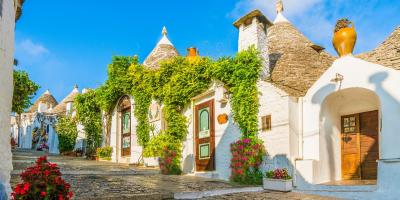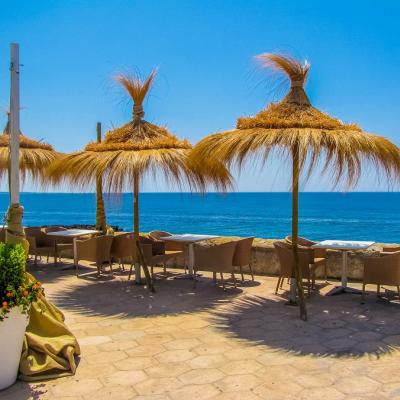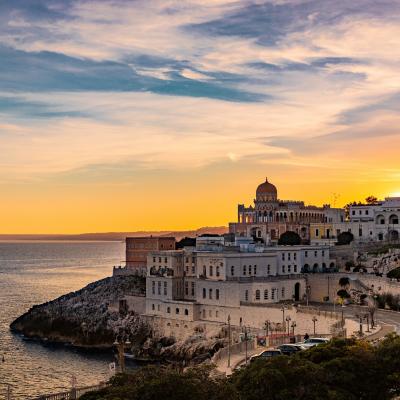Apulia
Puglia Tourism, a combination that has been consolidating in recent years, in fact, the number of presences grows significantly every year. Merit of the crystal clear waters and Caribbean and non-Caribbean beaches, but also of the history, good food, landscape and why not also of the many events that re-call visitors.
As a result of the Unification of Italy following the union of Capitanata, Terra di Bari and Terra d'Otranto, Apulia is the easternmost region in Italy: the easternmost point of our peninsula is located, to be precise, at Punta Palascìa, near Otranto. An absolutely wonderful area where, in summer, it is worth taking a swim. It is not the only one, though! If you intend to plan a trip to this beautiful region, whether oriented to spend some time at the beach or to visit the historical and architectural beauties of the region, this site is for you. Page after page, we will give you our "tips", taking you by the hand through the beaches, beauties and, why not, the goodness, of this region so welcoming, sunny and even a little windy.
Also known as "Le Puglie," it is the easternmost region of Italy, the heel of the Boot, a strip of land stretching out into the sea with wonderful beaches for all tastes. It holds the record for the longest maritime border with 784 kilometers, to which must be added the 45 kilometers of islands and enjoys no less than 11 Blue Flags that reward the cleanliness of the sea and services. Apulia is the only Italian region substantially devoid of mountains (2 percent): only in the western end of the region do we find the Daunia Mountains, with just 1100 m of altitude. Almost half of the territory is covered by hills and, above all, by plateaus such as the Tavoliere delle Puglie, the second largest plain in Italy. For those who love history, Apulia offers a wide range of places that tell of the ancient origins of this land: from prehistory to Magna Graecia, from the Imperial Age to the Renaissance and the splendors of the Baroque. In addition, it is a region full of events in every season, such as Christmas in Alberobello and the Putignano Carnival.
What to see and what to do
Year after year, summer after summer, Apulia manages to welcome and amaze visitors and tourists from all over the world, who feel at home here, thanks to the temperate climate and excellent gastronomy. Added to this are the natural beauty, beaches, landscapes, historical, architectural and cultural treasures, and the great heritage of traditions belonging to different ethnic groups that over the centuries have overlapped, overlapped and sometimes undermined each other to the advantage of others in this area.
Puglia Cultural tourism especially historical with the many military fortresses and castles scattered throughout the region, a destination for curious and fascinated tourists. The most mysterious is Castel del Monte, famous for its octagonal shape, but nache for its esoteric and Templar references, you cannot miss a visit to the Castle of Gioia del Colle, Taranto, or a Brindisi and Trani. A region dotted with dolmens (ancient megalithic monuments) present in the area of Bisceglie; many caves to visit such as those of Castellana dug into the ground or marine caves present in Salento, such as that of Grotta Romanelli not far from Santa Maria di Leuca. Don't miss the cathedrals and churches scattered throughout Puglia, where Romanesque and Baroque styles predominate. The most devout will not want to miss the opportunity to go to San Giovanni Rotondo, where St. Pio of Pietralcina lived out his faith, to visit the Saint's Shrines. A visit to a world-famous location such as Alberobello, a UNESCO World Heritage Site for its world-famous trulli, conical-roofed stone dwellings handcrafted without glues.
With one of the most beautiful seas on the peninsula, sandy bays and characteristic Mediterranean scrub, Puglia Turismo is one of the most popular regions for summer vacations. The crystal clear waters of the Tremiti Islands offer a wonderful landscape, characterized by inlets, caves and deep seabed, all colored by dense vegetation and populated by many fish species. It is thanks to this beautiful sea that we can offer you unique experiences: find out more about our services! Beaches not to be missed are Baia dei Turchi, Torre dell'Orso, Campomarino, Castellaneta Marina and Cala Paura. There are many places where you can practice various sports, including windsurfing or kitesurfing and not only during the summer season. An original way to get around can be a bike tour: there are many itineraries in the Gargano Park or the Murge Park, or go into the hinterland in search of a lifestyle away from the hectic one of the big cities.
Apulia has always stood as a trait-d'union between the different cultures that have succeeded one another in the Mediterranean. To visit Apulia is to take a little big journey through history-a history that is centuries and centuries long and has left indelible yet different traces in the different provinces of the region. That is why we use to distinguish between Gargano and Daunia, Imperial Apulia, Bari and the coast, Itria Valley, Magna Graecia, Murgia and Gravine, and Salento. Each area offers visitors absolutely unique facets in terms of landscape, cultural offerings, architectural beauty, and gastronomy. After all, Apulia is the beauty of 400 km long.
What to eat
Puglia food and wine tourism, because of the simplicity of its ingredients, Apulian cuisine is called "poor" but able to satisfy every palate. Many variants of pasta are made from the wheat of the Tavoliere: orecchiette, prepared with turnip tops or the very tasty ricotta forte; cavatelli, which are prepared with white broad beans, or with arugula and anchovies, or with wheat and beans; troccoli, spaghetti from the province of Bari that are cooked either with seafood sauces or with game ragout. Also worth mentioning are cappello del gendarme (a rich rustic pie stuffed with prosciutto, pork, eggs, turkey breast and various caci), burrate (dairy products stuffed with creamy milk cream) and zampine (sausages made with tomatoes, parsley and cheese roasted over embers).
Puglia tourism is home to two truly unique products: the cardoncello mushroom and lampascione, a distinctive bitterish onion. Among the excellent products that have deserved the protection of PDO or IGT marks are Altamura bread, Clementina from the Gulf of Taranto, Bella della Daunia (an olive cultivated in the Foggia area since 1400), the famous wines and extra-virgin olive oil, which has different characteristics depending on the territorial area of production. As desserts we find pettole, batters made with flour and fried potatoes sprinkled with sugar, typical of the Christmas holidays; cauciuni from San Nicandro made with chickpeas, chocolate and cinnamon; Sfogliata di Canosa, with almonds and grapes; and propalo del Gargano.
As already anticipated, evidence of the historical and ancient splendor of the region can also be found in the field of food and wine, where Puglia manages to excel in so many areas, going on to rediscover and enhance typical products marked by a glorious past. Let us take the example of the well-known Nero di Troia grape variety, which legend has it was brought to Apulian soil by those who escaped the assault narrated in Homer's famous Odyssey.
With regard to the general characteristics of Apulian gastronomy, know that it is a gastronomy of the land and not exclusively of the sea, as is often thought when dealing with a region so strongly leaning into the Mediterranean. We will therefore find a wide range of vegetable-based preparations: in summer peppers and eggplant take center stage, while winter is the undisputed reign of turnip greens, lampascioni and other tasty vegetables. Pasta is very present and is a pasta of poor origins, which is why it is prepared only with water and flour, without the addition of the egg. Meat and fish are equally prominent, but to a lesser extent.

